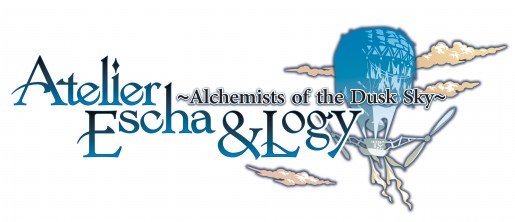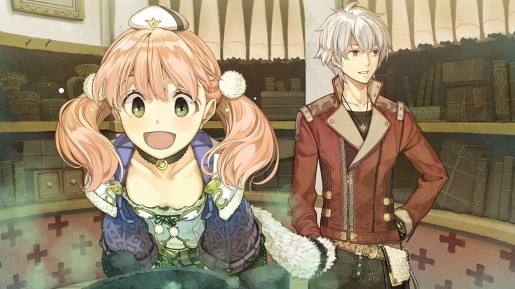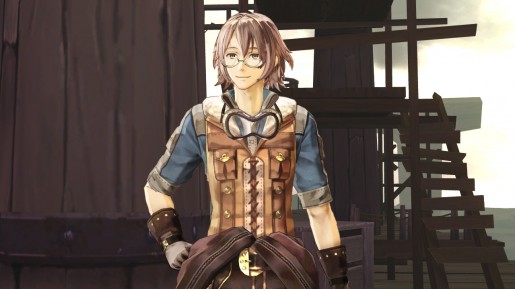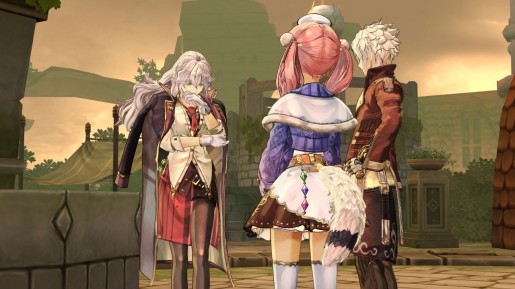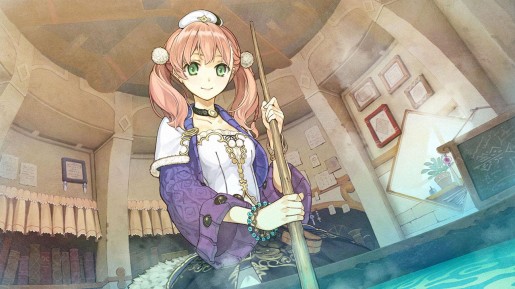While it may not have the name recognition of some other games in the RPG genre, the Atelier series from GUST has maintained a steady release schedule on PlayStation platforms since its first game back in 1997 on the original PlayStation. We have seen side games on other platforms, but Sony has managed to keep all of the mainline games on their own consoles over the years. That has not changed as our latest release is the next entry in the mainline series, exclusively for the PlayStation 3, known as Atelier Escha & Logy: Alchemists of the Dusk Sky.
Unlike past games, when you first start up the game you must pick between two characters named Logix “Logy” Fiscario and Escha Malier. Whichever of the two characters you pick will be the one you control for the rest of the game, so it is a pretty big decision. However, the one you do not pick will still be with you throughout the game, just as your companion. The character interactions are specific to each one, but overall there is not much difference in the two, other than these interactions and the inability to move your chosen character from the front line in formations prior to battle.
Escha is your younger option as a resident of Corseit, she knows her away around and handles most of the synthesizing you will do in the Atelier. Logy is the new guy in town that joins the team with Escha, both as alchemists. Coming from an area known as Central City, Logy is the more veteran alchemist, but is from a much more advanced city than the small town of Corseit. Both characters have distinct personalities that set themselves apart, though still falling under some typical genre stereotypes.
As you play through the game, you will gain new party members as the story brings them into play. These include Escha’s brother Awin, as well as Threia, Reyfer, Lucille, and even the returning character Linca. They each have their own unique attack style, such as the very different use of earrings to attack with Threia. These are further brought out by the special supports, which will be discussed later.
Taking perhaps only a minor element of a lot of other games in the genre, the Atelier series has always had a major focus on alchemy and that is certainly no different here. However, it is definitely not a carbon copy of past games. While past entries in the franchise has had a major focus on alchemy, with combat only being more of a side note, this one splits the experience almost down the middle between the two. These two are intermixed through the use of assignments from your superior Marion, who also returns from a prior entry in the series.
For every reporting period, you will have one main assignment to complete, such as to investigate why the source of an entire village’s water supply has dried up. These will be more story oriented while the rest of your assignments are like sidequests, such as having to gather a certain number of gathering a certain number of items per period or synthesizing a certain number of items. Many of these assignments are completed by moving across the world map, which is setup almost like a board game with you moving all around spaces to get to new locations. In each of these locations you will be doing two things, gathering items and fighting enemies.
This leads to one of my biggest complaints of Atelier Escha & Logy: Alchemists of the Dusk Sky, the repetitiveness found from doing a lot of this. While there are some advancements and variations, most of the time you will be going to and from each of these locations and then defeating the four or so sets of enemies and collecting the four or five items in each and move to the next. It would have served better if there was some sort of difference between them, but it’s a lot of the same. However, while repetitive, it can still be quite fun thanks to a fantastically complex fighting system.


